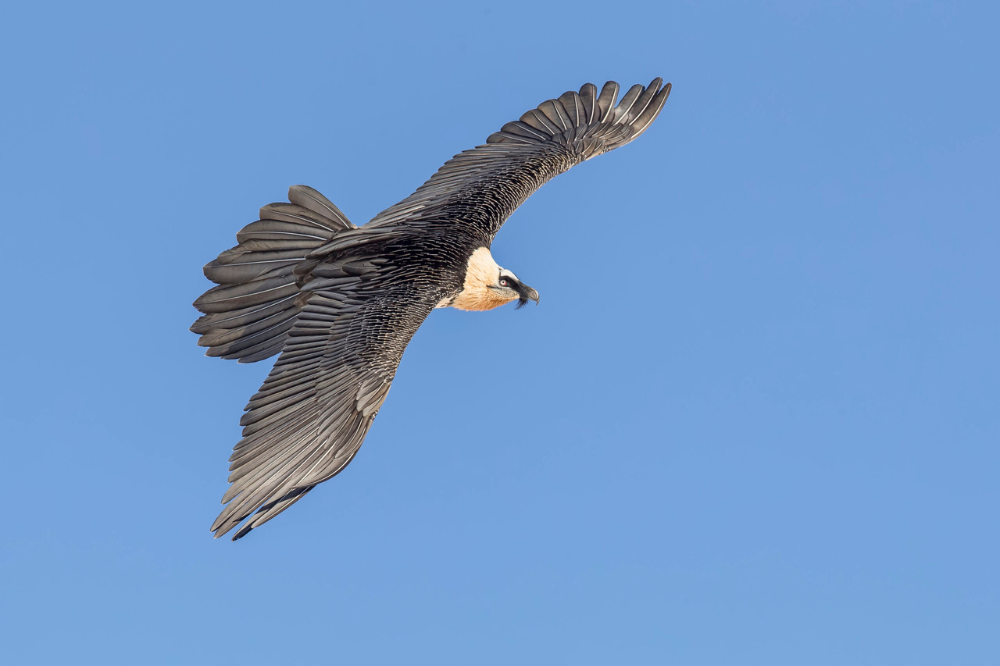Good prospects for bearded vultures
Once extinct, now once again native to the Alps: the reintroduction of bearded vultures to the Alpine region has been successful and the population is growing, as a recent study from Switzerland shows. The greatest threat to these birds of prey remains humans.
Under the same conditions, the bearded vulture population could double in the next decade, according to a recent study by the Swiss Ornithological Institute in Sempach, the Pro Bartgeier Foundation and the Department of Conservation Biology at the University of Bern. However, even a slight increase in mortality would cause the population to decline. The vultures still face numerous threats, including collisions with power lines and wind turbines, poisoning, illegal shooting and disturbance of their breeding sites.
Europe’s largest bird has had an eventful history: once reviled for stealing lambs and even children, it was hunted and exterminated in the Alps by the beginning of the 20th century. Launched in 1986, a reintroduction programme achieved its first breeding success in the wild in 1997. Today, the now self-sustaining bearded vulture population numbers almost 350 individuals. However, this strong growth trend also shows that the bearded vulture population is still small and far from reaching its natural size.
The study also found geographical differences in population growth. While the bearded vulture population is growing rapidly in the Central Alps due to optimal habitat conditions, it is stagnating in peripheral areas due to higher mortality rates and lower breeding success. It should therefore be essential to identify the causes and take effective countermeasures.
Sources and further information:
www.srf.ch/news/schweiz/comeback-des-bartgeiers-erfolgreiche-rueckkehr-von-europas-groesstem-vogel-in-die-alpen (de), https://besjournals.onlinelibrary.wiley.com/doi/10.1002/2688-8319.12347 (en), www.vogelwarte.ch/de/news/bartgeier-im-aufwind/ (de)


